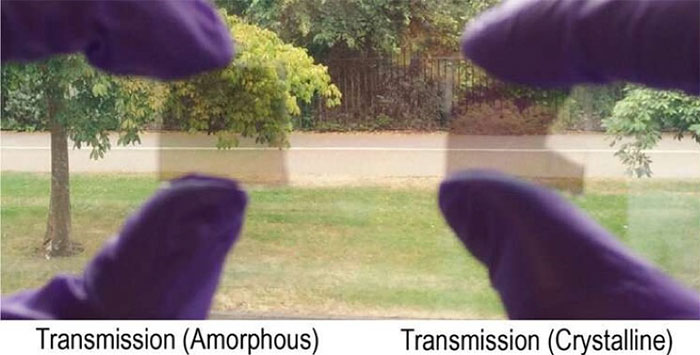Windows play a significant role in heating and cooling homes. However, they are also considered a major issue.
This is because maintaining indoor temperatures consumes a lot of energy and accounts for 20 – 40% of the national energy budget in developed countries.

The new type of window can harvest solar energy in winter and warm the house.
Researchers from the University of Pittsburgh (USA) and the University of Oxford (UK) have upgraded energy-efficient windows to a “new level.” The scientists have established a “smart window” that can harvest solar energy in winter to heat homes. In summer, the window can reflect sunlight, keeping the house cool. This research has been published in the journal ACS Photonics.
Mr. Nathan Youngblood, the study’s author and assistant professor of electrical and computer engineering at the University of Pittsburgh, explains: “These windows can change according to seasonal needs. They absorb near-infrared light from the sun in winter and convert it into heat within the building. During the summer months, sunlight can be reflected rather than absorbed.”
The window is made up of a layer of optical material less than 300 nanometers thick. Within this, a thin active layer made from phase-change material can absorb invisible wavelengths of sunlight and emit them as heat. This material can be “converted.” As a result, it changes the wavelengths of light.
“Importantly, visible light is transmitted nearly identically in both states. Therefore, you will not notice any change in the window,” researcher Youngblood notes.
The material can even be adjusted to allow for more precise temperature control. For instance, 30% of the material dissipates heat, while 70% absorbs and emits heat.
Harish Bhaskaran, a professor in the Materials Department at the University of Oxford and the lead researcher, states: “We exploit how invisible wavelengths are transmitted or reflected to regulate temperature.”
The researchers estimate that these windows could save 20 – 34% of energy annually compared to conventional double-glazed windows. To create and test prototypes, the researchers collaborated with Bodle Technologies, a company specializing in ultra-thin reflective films that can function like displays by controlling colors and light. Additionally, Eckersley O’Callaghan, a leading engineering and architecture firm, along with the thin-film manufacturer Plasma App, are also involved in the production of the windows.
Peiman Hosseini, CEO of Bodle Technologies, stated: “This work demonstrates another exciting optoelectronic application. The commercialization of these glass panels still faces significant challenges. However, I believe this technology should be part of the future in addressing climate change.”


















































